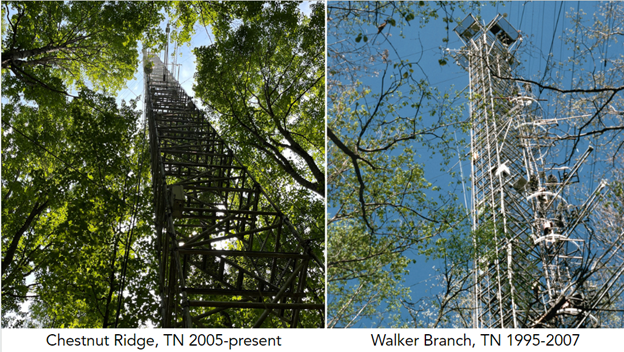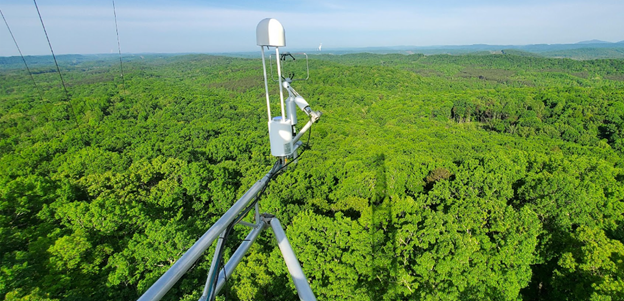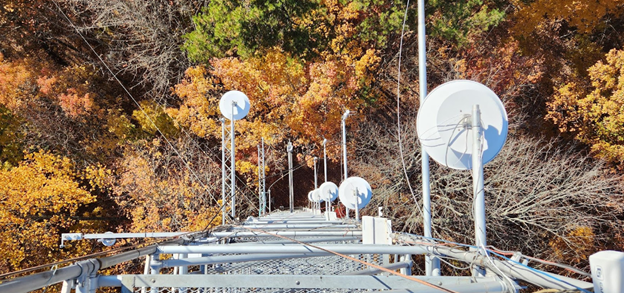Forest Micrometeorology and Carbon Fluxes: Chestnut Ridge
Forests cover a little more than 30% of the Earth’s surface, but store around 45% of total terrestrial carbon. Roughly one-third of the total carbon dioxide emitted each year from fossil fuel combustion or land use changes is taken up by the world’s forests by photosynthesis. Although there is evidence that forests have adapted to rising atmospheric carbon dioxide (CO2) concentrations, scientists do not know whether the world’s forests can continue to take up carbon at similar rates indefinitely as CO2 continues to rise and the climate continues to warm. Additionally, the exchanges of energy, water and other chemical species and aerosol particles between forests and the atmosphere have significant impacts on weather, air quality and climate. Understanding these exchanges and how they are changing as a result of rising CO2 and warming temperatures is critical to NOAA’s missions to forecast weather and air quality and predict future climate.

More than 40 years ago, ARL’s Atmospheric Turbulence and Dispersion Division began making measurements at a deciduous forest monitoring site in east Tennessee. These measurements were designed to better understand the flows of energy, carbon dioxide and water vapor between the forest and the lower atmosphere. The original measurement site was located on the property of Oak Ridge National Laboratory (ORNL) as part of a larger forest ecosystem study in the Walker Branch Watershed. In 1995, continuous measurements of energy budgets, carbon dioxide and water began at Walker Branch. In 2005, a second monitoring site, called Chestnut Ridge, was established a few miles away from the Walker Branch site (which was retired in 2007). Chestnut Ridge consists of a 60 meter walkup tower in a mixed deciduous forest and is part of ARL’s Surface Energy Budget Network (SEBN). Measurements at Chestnut Ridge include above-canopy CO2 and water vapor fluxes; incoming and outgoing shortwave, longwave, and photosynthetically-active radiation; wind; pressure; surface temperature; precipitation; and soil temperature and moisture.



